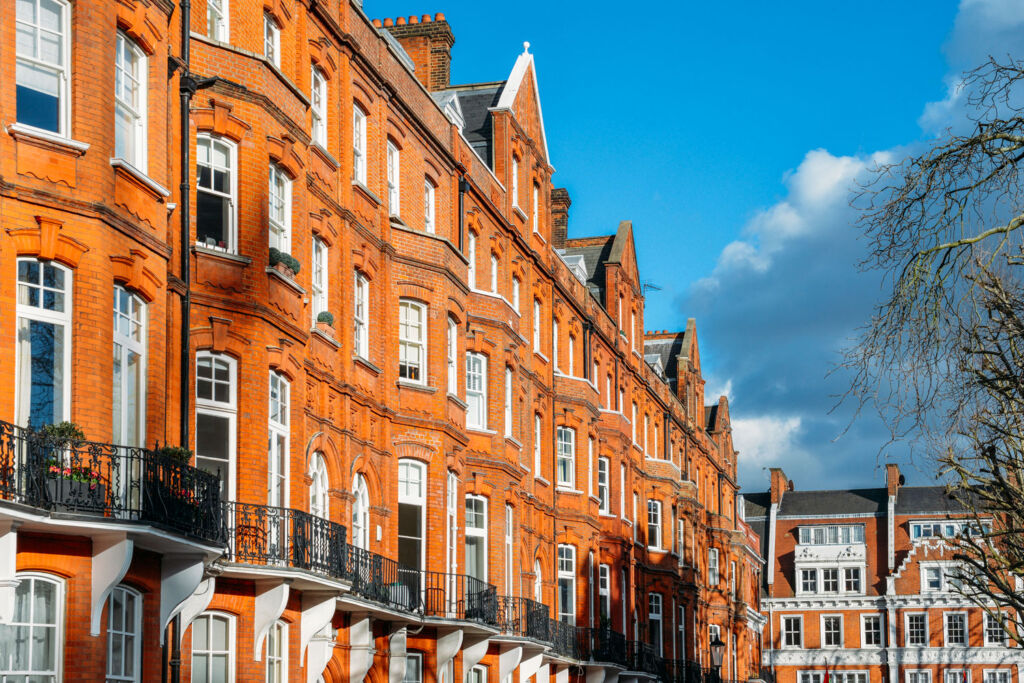
The Nationwide HPI for September 2020 shows a pickup in house prices across most regions, and even though the weather would appear to be cooling, the property market is still producing significant heat.
The latest Nationwide House Price Index (HPI) is out, and as expected, it proves that the UK property market is still going through the gears with the annual house price growth now at 5.0%, the highest since September 2016.
Pretty much, on this same day in 2016, property was also in the headlines with the Evening Standard running a story on the implementation of basement tax which would be hitting London’s wealthier residents. Four years on and it’s still making the news but for entirely different reasons.
Nationwide’s Chief Economist, Robert Gardner has theorised that the buoyancy in the market is down to a number of factors and these were the stamp duty holiday and pent-up demand and an area we’ve covered in detail over the past few months, people reassessing their lives during the lockdown.

James Forrester, Managing Director of Barrows and Forrester, told us; “While there may be an autumnal cold snap in the air, this drop in temperature is yet to reach the UK property market.
The furnaces of house price growth continue to burn brightly, fed by a seemingly never-ending stream of homebuyer demand. As a result, the market has exploded out of the blocks from a pandemic standstill, to what are quite frankly, remarkable new heights.
This has been largely due to a coiled spring of homebuyer Brexit uncertainty that has been quietly building in the background, boosted by a stamp duty holiday that has seen bargain loving Brits rush to secure a property purchase saving.”
For the coming months, one major fly in the ointment could be an increase in the unemployment rate, which would have a direct effect on the market. Robert Garner commented; “Younger people were much more likely to have put off plans than older people, which may reflect concerns about employment prospects.”
“Indeed, most forecasters expect labour market conditions to weaken significantly in the quarters ahead as tighter restrictions dampen economic activity and the furlough scheme winds down. While the recently announced jobs support scheme will provide some assistance, it is not as comprehensive as the furlough scheme it replaces.”

The Nationwide HPI data also reaffirmed something we’ve stated in articles numerous times this year. That people are choosing to move to less built-up areas, and this is becoming very evident with the older-age homebuyers.
We recently published an article that showed property rental in major cities was on the up, but the data provided to us didn’t clearly outline the reasons why. One could speculate that it is due to people moving out of properties in cities without space into properties offering more?
Nationwide’s HPI showed that of all the regions, the South-West performed the best with annual price growth rising from 2.3% to 5.5%. Surprisingly and for the first time since 2017, property in the south of England outperformed those in the North. It’s my opinion that this will reverse over the coming months with an increasing number of homebuyers deciding to take the value for money route coupled with remote working.
Northern Ireland is one of the few areas not experiencing a significant bounce in prices. It was the weakest performing region and prices there are still 36% below their 2007 peak.
Scotland also saw a slowing in annual house price growth, halving in this quarter when compared to the previous one. From a personal perspective, I put this down to the devolved Government’s push for independence from the UK. I believe that talk of this is impacting the willingness for people to invest into a potentially uncertain future in Scotland and without this, Scottish homeowners would’ve experienced a far greater spike in property prices, perhaps more than any other part of the UK.

London’s prices have continued to move higher, and average prices in the capital now stand at £480,857, 21% higher than it was in the 2007 peak. Prices in the Outer Metropolitan area also rose with annual price growth now sitting at 4.8%.

Marc von Grundherr of London property specialists, Benham and Reeves, said “The market is showing no signs of letting up and has continued along the rapid upward trajectory seen pretty much since lockdown restrictions were eased. You need only look at the remarkable rate of annual growth for proof of this revival, with an enormous five per cent jump on this time last year.
At this rate, it may be a blessing in disguise should the Government cancel Christmas, as the industry is going to need every hour, of every day, to simply service the huge levels of homebuyer activity we see at present.
We already see considerable backlogs in sale completions at the legal stage due to the unprecedented levels of market activity. We expect this activity will remain extremely strong, at least, until the stamp duty reprieve for homebuyers had ended. At which point normality may return.”
This year much has been said of the role of the lenders and how they have purportedly been making obtaining finance difficult, pulling products right, left and centre. The September 2020 Nationwide HPI casts a different light on this. Mortgage approvals for house purchases are now at their highest since 2007 and well above the monthly average.
Islay Robinson Group CEO of Enness Global Mortgages said; “We’ve seen mortgage approvals reach a thirteen-year high this week and this concrete market foundation is helping to propel house prices to dizzying new heights.
The question is how long this momentum can be sustained?
Although the market is sure to run out off puff at some point, it certainly looks as though the traditional meander into Christmas and the New Year will be replaced by a sprint finish, and this could last well into next 2021.
For those considering a property purchase, now remains a great time to do so. Despite house prices rising rapidly, there are still some fantastic mortgage rates available for those who can secure them. The key to doing so is all in the deposit and so raising as much as you can at the front end of your purchase is going to pay dividends further down the line.”
One area that has been a stand-out performer in the property stakes during 2020 is the north-west of England, buoyed in particular by the fantastic recent performance of the Manchester, Liverpool and Preston property markets.

Until now, we’ve not provided any first-hand experience from someone working within the region. Therefore, I am going to leave the final words to Michael Bailey, who is one of the leading estate agents in the north-west of England; “The north-west reflects what is being seen in other parts of the country. Buyer demand has increased dramatically post lockdown, and whilst stock levels have also increased; there is still a huge disparity between supply and demand.
There is, of course, the post lockdown bounce to take into account as the market came out of paralysis. However, in addition to this, many people have reassessed their existing homes and having compromised or put up with elements they are unhappy with, this recent period has focused their minds on moving. Similarly, the stamp duty holiday has added more fuel to fires of demand and people have brought forward their moving plans by a number of years as it is simply cheaper to move than ever before.
The three elements have almost created a perfect storm for demand and explain why we see such rapid house price growth.
Of course, given the potential wider economic impact of COVID later in the year this may reduce slightly, but I see the demand continuing later into the year, and the normal by seasonal variation won’t be seen as much.
The north-west continues to outperform the southern regions. The interesting hidden statistic is the number of people we are speaking to who are relocating from the south and south-east to the north-west. We estimate that currently, 30% of the buyer enquiries we are receiving are buyers relocating from the south to the north-west, and this is a marked increase.
The main drivers are buyers wanting to be closer to family to provide a support network for young families or for buyers who have been freed from the shackles of the office by permanent or semi-permanent home working. The rail links into London from the north-west as well as the areas of outstanding natural beauty the doorstep make it an obvious choice.
We don’t see these trends changing anytime soon.”
Read more property articles in our dedicated section here.
![]()




You must be logged in to post a comment.